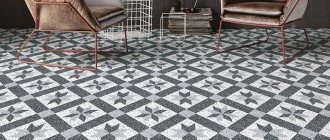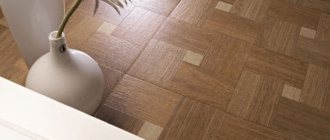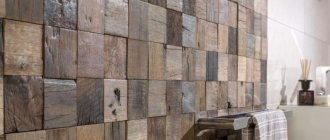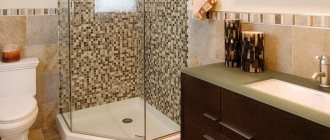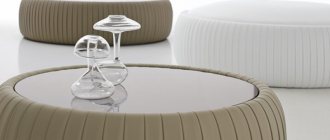The very next year after laying paving slabs, some Stellard Clients are faced with grass sprouting in the joints between paving slabs. Islands of nature make their way through the stones, but weeds spoil the appearance of the landscape design of your site, and in very advanced cases can lead to damage to the integrity of the coating.
And, naturally, questions arise:
- Can weeds harm the surface of paths?
- How to get rid of grass between paving slabs?
- What needs to be done to prevent it from growing where it shouldn’t?
Advantages of paving slabs for a summer residence
The main advantages of country paving slabs are presented:
- Affordable price. Depending on the production technology, the average cost of such material can vary significantly. And thanks to the ability to make tiles yourself, it is possible to obtain a strong and durable material at minimal cost.
- Variety of designs. A significant number of options for the appearance of tiles allows you to create your own unique and original design of a country path. The tiles differ not only in size and shape, but also in texture and the ability to choose the optimal laying pattern.
- Low cost of coating maintenance during operation. The used street paving slabs can be partially dismantled or laid without the use of heavy or special equipment.
- Environmentally friendly materials used in the production of paving slabs. The constituent components do not contain toxic impurities or harmful dyes, so this building and finishing material is absolutely safe.
- Increased strength and reliability. Paving slabs made in accordance with established technology are capable of withstanding significant mechanical loads, are resistant to abrasion and temperature changes, and are characterized by excellent frost resistance.
The advantages of modern tiled flooring in the countryside also include ease of cleaning from dirt and ease of self-installation. Despite the impressive number of advantages, paving slabs also have some significant disadvantages, including slippery surfaces in winter and sagging of the finish if the laying technology is violated.
It is important to note that the average cost of paving slabs is higher than the price of asphalt pavement, but this construction and finishing material is more reliable and durable, as well as convenient to use.
The use of paving slabs in landscape design
Paving slabs are the most popular modern material. Cottage towns, large garden plots, and country mansions are instantly transformed, embodying a unique and inimitable style, comfort, and coziness. More and more people want to see beautiful houses, streets, roads and bridges. City dwellers want to surround themselves with an environment that evokes pleasant impressions and is as close to nature as possible.
The use of paving slabs in landscape design has replaced inexpressive and boring asphalt. Manufacturers improved its appearance, while landscape designers worked to expand its scope. For this purpose, original coverings were created for alleys, garden paths, parks, suburban areas and courtyards of multi-story high-rise buildings.
Paving slabs, which are used in the landscape design of country houses, have a color and structure that is as close as possible to natural materials. Paths and driveways made of this coating are in perfect harmony with the soil, green spaces and grass. Using paving slabs in landscape design allows you to save a lot of money on natural stone.
Designers actively use this material in landscaping suburban areas. This popularity is due to the variety of colors, sizes and shapes, which allows you to create exclusive and original projects. The advantage of paving slabs is their ease of installation. It does not require special solutions for installation. Thanks to the same dimensions, installation is quick and, most importantly, neat. This type of material is perfect for creating paths, areas near swimming pools, entrances to houses, and designing recreation areas.
The use of multi-colored paving slabs in landscape design of the same size allows you to create a variety of patterns and interesting ornaments. Such elements can be laid at angles of 45 and 90 degrees. The chess laying method is very often used, which is considered a classic option. Paving slabs allow you to visually increase the area of the site.
This material has a number of advantages compared to conventional asphalt pavement.
Firstly, high aesthetic properties: a wide range of colors, a huge number of shapes for the embodiment of architectural and design ideas. Such qualities make tiles a necessary element in landscape design.
Secondly, comfort: the surface retains less water. It goes into the tile joints, which are filled with sand.
Thirdly, it is environmentally friendly: the tiles do not soften when heated in the summer season. This material does not emit volatile harmful substances. The sidewalk does not interfere with the natural water exchange of green spaces.
Fourthly, durability: the use of paving slabs in landscape design can continue for thirty years. In addition, its frost resistance is excellent for domestic weather conditions. Care and maintenance requires minimal effort. In winter there is no ice, and in summer there is no mud and puddles.
Thus, paving slabs allow you to extract economic benefits due to their durability and other equally significant characteristics, as well as make direct investments in your image.
Types of paving slabs
All varieties of modern paving slabs differ in cost, are characterized by certain advantages and some disadvantages, and also differ in the production method:
- Vibro-cast paving slabs are the simplest and most affordable option, which is based on the method of vibration of the finished working solution. The advantages of this material include a special glossy front surface, color variety, minimal costs for the production process and components. The main disadvantages of vibration casting are insufficient strength, low resistance to low temperature conditions and lack of proper durability of the finished material.
- Vibration-pressed versions of paving slabs are characterized by increased strength even in the absence of heat treatment at the production stage. The undeniable advantages of vibration compaction are represented by a low level of susceptibility to mechanical damage, automation of the production process, and low susceptibility to temperature changes and low-temperature conditions. Disadvantages include a limited number of shades and shapes.
- Hyper-pressed paving slabs are practically not subject to deformation and various damage as a result of mechanical stress, and also have the advantage of long-term and trouble-free operation, which is due to their low susceptibility to low-temperature conditions and sudden temperature changes. The disadvantages are represented by the disadvantages that are characteristic of the vibrocompression process.
- Polymer sand paving slabs are an innovative option for street pavement and are characterized by the absence of cement. The main binders are polymer components and plasticizers, thanks to which the building and finishing material acquires wear resistance and strength, absolute water resistance, high frost resistance, durability and a rich color palette.
Despite the ease of installation, during the installation process it is necessary to take into account the significant linear expansion of the polymer sand material under high temperature conditions.
Common types
Paving slabs with “Travnitsa” cells come in different shapes and colors. They are classified according to form:
- Honeycomb-shaped elements - withstand loads of up to 20 tons per 1 square meter. This determines their scope of use - sidewalks, bicycle paths, parking for cars, playgrounds for children.
- Square - they are stronger and can withstand intense loads, including from trucks. Therefore, they are used for landscaping areas with heavy vehicle traffic.
- Individual - here the shapes can be any, at the request of the customer, but it is worth remembering that their strength is not the highest. This material is recommended to be used for landscaping areas near a private house or pedestrian paths.
An original parking space.
Any color palette, because these are the same paving slabs, only of a different shape. It is worth noting that a concrete grass grate, which uses a coloring pigment in its production, is more expensive. Ready-made solutions offered by manufacturers:
Calculation of paving slabs
- grey;
- red;
- brown;
- yellow;
- green;
- blue.
Features and design options
For the purpose of paving the local area, traditional rectangular tiles are most often used. Despite the simplicity of the form, the use of elements of different colors allows you to create different combinations and unusual patterns. A path made of figured tiles looks more original, but is more difficult to install.
The most popular, easy to implement and common schemes for laying country side paving slabs:
- “herringbone” - laid out with alternating elements;
- “braiding” - performed by alternating longitudinal and transverse elements;
- “chaos” - an arbitrary pattern is laid out from elements of different colors and sizes;
- “Chess” - laid out with two-color square tiles in a traditional checkerboard pattern.
Finished tiles in the country house
Patterned masonry
Particularly popular is the laying of paving slabs using a special circular template, which allows you to create a stylish and effective tile pattern.
The combination of tiles and lawn looks especially interesting. Such a beautiful and very harmonious combination of irregularly shaped paving slabs and tile joints looks impressive against the backdrop of green lawn grass.
How to make tiles at home?
As noted above, the production of finishing material takes place in several stages. Before you begin the work process, it is recommended to prepare the following components that will help you cope with this task.
For this you will need:
- matrix;
- construction trowel;
- sand;
- cement;
- pigments for giving color;
- water;
- building composition thickeners.
The production of sidewalk decor takes place in several stages:
- Preparation of building composition. To do this, mix sand, cement, thickener and pigment with each other. Next, gradually pour water until a homogeneous composition is obtained.
- After this, put the resulting mixture into the mold.
- When the entire matrix is filled, leave it until completely dry. On average, this will take from 1 to 3 days from the moment the cement mixture is laid.
- When all the elements are ready, we begin to carefully remove them from the matrix.
- The final stage will be laying paving slabs with your own hands in the garden area.
Preparing the base
The quality characteristics of the future masonry, as well as the durability of the finished tile covering, directly depend on the correct preparation of the base. Three methods of arranging the base are practiced, which are presented:
- sand base with fixation of the coating on top of the compacted cushion without the use of additional building materials;
- sand-cement base, based on the use of a dry mixture of cement and sand;
- a concrete base that allows you to lay tiles using special adhesive solutions.
Cement base
The basic requirements for preparing the base for tile covering are as follows:
- the creation of drainage drainage helps prevent the erosion of tiled street surfaces;
- arrangement of waterproofing, represented by a special substrate, prevents the flow of water from the ground;
- the drainage system includes a sufficient slope of the surface and the arrangement of drainage grooves;
- an optimally leveled surface helps to accurately fit all elements of street paving stones.
Burying the base into the ground provides the required surface height for laying paving.
Paving slab installation diagram
In order for the completed paving street covering to be characterized by durability and reliability, as well as in order to increase the stability of individual layers and prevent the formation of various deformations, the choice of the type of base must be approached very carefully.
Self-paving paths with paving slabs is one of the best options for arranging pavement in the local area. The installation technology is described in the article.
Types of paving slabs, as well as the pros and cons of each variety are described here.
Laying paving stones is a fairly simple task. Read on for details on how to do the work correctly.
Garden paths: design options
Concrete plates
Concrete is a fairly economical and practical material for use for garden paths. They are frost-resistant and wear-resistant. You can give concrete slabs any shape and width. By adding dyes to the concrete mixture, you can change the color of your garden path.
A garden in high-tech or modern style will be aesthetically seamless in combination with concrete paths. The coldness and severity of concrete can be diluted with metal or plastic parts. The undoubted advantage of such a path is its ease of maintenance; it is easy to sweep or wash. If concrete paths are not designed correctly, they may not have a particularly presentable appearance. Play up the simplicity of concrete, and the paths will delight you with their practicality for a long time.
Paths made of natural stone
Garden paths made of natural stone are practical and aesthetic. How natural the stone paths look surrounded by bushes, trees and flowers! But many lovers of the design of garden paths made of natural stone are put off by the high price of the material and the difficulties with its processing. When processing natural stone, maintain the color and shape of the material so that the path looks as natural as possible. The most popular stones for designing garden paths are granite, limestone, marble, and basalt.
Pebble paths
An inexpensive and uncomplicated option for covering garden paths is pebbles and crushed stone. Clearly define the boundaries of the path and the amount of fill material. A minimum edge for such a path is simply necessary, since during rainy weather its contents can be mixed with clay and soil.
Mulch can be a bulk material for your garden path. Mulch is similar to small pebbles or coarse sand in various colors. Mulch is poured into specially made recesses in the path. It is difficult to keep such a path from connecting to the ground during rain, so you need to think about how to minimize this contact.
This type of path is due to its “complex” relationship with the surrounding land in rainy weather.
Brick-clinker paths
Brick garden paths will require careful care from you, as they are not durable and do not have high wear-resistant qualities. But the low cost, warm color, and ease of installation and dismantling of the material attract the attention of gardeners for making paths in their summer cottage.
Tiles can also be included in this category. Country style design is perfectly complemented by tiled paths. Road tiles are easy to clean, but due to the fragility of the material, they are poorly in demand on the road surface market.
Wooden paths
If you want to turn your site into an oriental fairy tale and fill it with the atmosphere of Japanese and Chinese traditions, then wooden garden paths are suitable for you. The wood for such paths must be properly processed and installed. Wood flooring requires maintenance and is not durable.
Steppingstones
In the 21st century, this popular type of garden path began to be often used. The path consists of large stones, tiles or log cuts. Garden paths made from such complex materials that require painstaking labor, such as glass, plastic covers, etc., are gaining popularity.
The steppingstones specially cast from concrete are very original. You can make these garden paths yourself, they will look creative, and their production will not encroach on your family budget. Cement and a shape of your choice is all you need to make a garden path. It is easy to plan the color of the path by pouring special dyes into the cement.
Hand-made
You can also create mixed tracks. If you have extra building material left, you can come up with compositions for garden paths from them. Such paths will not require you to invest additional money and will allow you to be creative in developing the design of garden paths in your country house.
A garden path looks aesthetically pleasing in a combination of pebbles of different colors and even, smooth stone. Wood should not be mixed with other materials, as it is majestic in itself and does not require additions.
You can come up with a large number of shapes to create curly paths in the garden. There are special kits for creating garden paths, which consist of a certain amount of materials. When creating garden paths with your own hands, play with decorative elements and color schemes, and you will be rewarded with the path of your dreams.
Laying paving slabs at the dacha
After the basic consumables, represented by stone or plastic curbs, cement, medium-fraction crushed stone, sand and geotextiles, have been purchased, and the base has been equipped, you can begin the direct laying of the coating:
- marking the area for installation;
- cleaning the area for installation;
- digging a trench according to the markings;
- backfilling the leveling sand layer;
- geotextile layer flooring;
- arrangement of drainage;
- installation of enclosing curb elements;
- arrangement of the supporting base;
- treatment of tile elements with a hydrophobic composition.
Do you want to get unique paving slabs? Then make it yourself. Do-it-yourself paving slabs - instructions for making and painting.
We will tell you further how to choose the right machine for paving slabs and how to make tiles using it.
The installation process itself may vary depending on the chosen technology and type of base.
If the base is a concrete surface, then the tile elements are fixed using traditional cement mortar. The tiles are laid on a leveled sand-cement base, followed by filling the joints with a special compound.
Methods for removing grass from paving slabs:
A special L-shaped garden knife will allow you to remove grass by the roots.
In domestic tool stores, such a knife can be found as a crevice cleaner or garden knife. And in the well-known online store Aliexpress it can be found by searching for “knife hook for grass removal.” It costs a little more than 100 rubles. (in 2020), according to reviews from those who purchased, delivery takes from two weeks to a month and copes with its function.
L-shaped knife for removing weeds from paving slabs
The use of herbicides is one of the most effective ways to control weeds
You can also use herbicides - chemical solutions to control weeds. It makes sense to use traditional chemicals if there are no useful plantings along the paths, since herbicides can also damage their root system. Instead of using a chemical solution, you can treat the joints with organic vinegar-based products and sprinkle regular table salt between the tiles. This treatment is safer, has a softer effect and can even be used in an area where a small child will play. The coating should be processed in dry weather to avoid washing out the products by rainwater. It is advisable to test the effect of chemicals on a small area before using it over the entire paving area. It can get deep into the gap between the tiles and hook the plant at the root. Thus, by eliminating the weed from the roots, you will prevent its further growth and thickening, maintaining the integrity and neat appearance of the coating. The photo below shows what a weed looks like treated with Roundup. It is best to process joints at the end of April and for the second time during the season - at the end of July. This composition does not entail external changes to the tile.
Effect of Roundup to kill weeds on tile surfaces
After applying herbicides, the grass dries out within a week
Using slag powder to sand seams
Flour - a material obtained by sifting out granite, limestone, and slag - will perfectly protect against the germination of weed seeds. The thickness of one grain of flour is 0-5 mm.
Muchka has a low level of radiation, such that even for small children this material is considered safe. Many tile setters primarily use this material both when laying paving slabs and when filling gaps between tiles. After treating the joints, it is necessary to thoroughly rinse the surface with water; the flour will set, harden, and weeds simply will not take root between the paving slabs. Be sure to test the technology on a small area if you are laying colored tiles.
Scalding with boiling water
The safest method, but with the shortest effect, is to scald the weed with boiling water and then rinse the joints with strong water pressure. This method will help solve the problem with vegetation for a week or two, after which you will need to treat the joints again.
Now you know the basic methods of controlling weeds growing between tiles, and you can safely use them when laying and processing paving slabs on your site.
